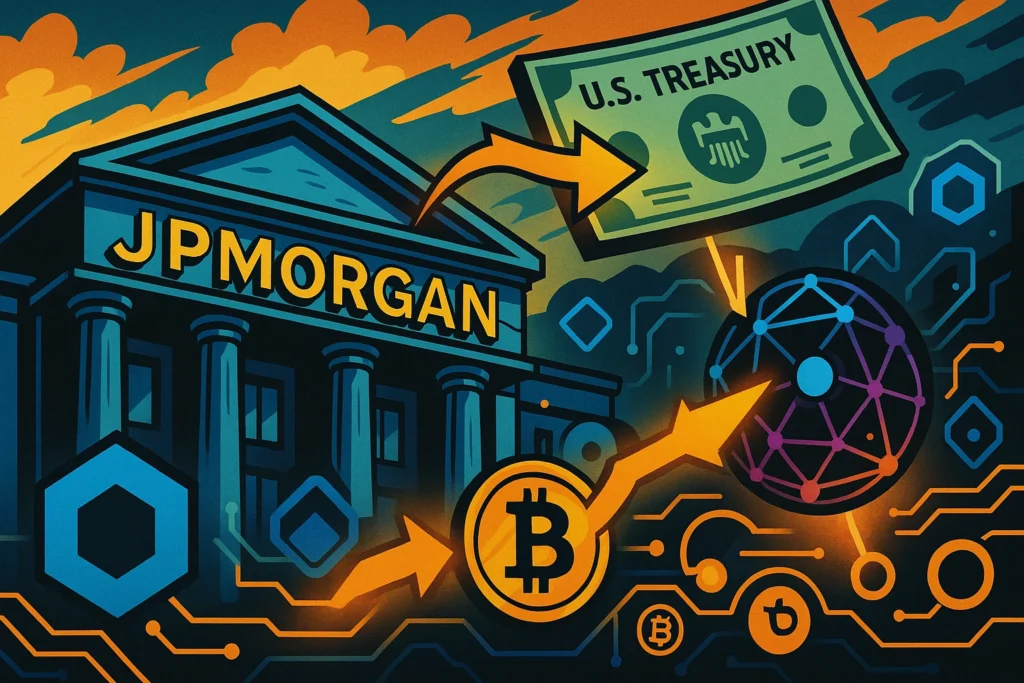The financial world witnessed a significant milestone. JP Morgan , in collaboration with Chainlink and Ondo Finance, has completed a groundbreaking cross -chain transaction. This involved the settlement of tokenised U.S. Treasuries using blockchain. Their efforts show Blockchain’s capacity to modernise traditional economic systems in a safe and effective way.
At the center of the test was the delivery of delivery versus payment (DVP). This process, which is crucial for securities trading, ensures that payment and asset exchange takes place at the same time. Traditionally, DVP processes are slow and expensive. This collaboration did it quickly, securely and automated – over two separate blockchains.
JP Morgan Powers Institutional Blockchain Shift
JP Morgan used its Kinexys Digital Payments network to facilitate the transaction. Kinexys is a permissioned blockchain for institutional clients. It processes more than $2 billion per day and has already transferred $1.5 trillion in total. This indicates JP Morgan’s strong belief in incorporating blockchain into actual financial operations.
But what’s unique about this test is the public blockchain infrastructure participation. Banks traditionally shun public chains because they do not want to subject themselves to regulatory exposure. But here, JP Morgan used Ondo’s testnet — a huge change in its stance.
Uses Chainlink for Interoperability
JP Morgan was greatly advantaged by Chainlink’s Cross-Chain Interoperability Protocol (CCIP). The technology used was the secure link between Kinexys and Ondo’s chain. Chainlink’s Runtime Environment managed the synchronised asset and transfer of payment. The outcome? Secure, risk-free, and almost instantaneous settlement.
This is also a hint towards Chainlink’s position of becoming the new standard for capital markets. Its increasing usage among companies such as Coinbase and Taurus only proves this point more. Chainlink mitigates risks by guaranteeing atomic, automatic swaps between blockchain networks.
Real-World Application and What’s Next
This is not another blockchain experiment. It’s a blueprint for the movement of real-world assets securely and quickly between systems. JPMorgan Crypto brought tokenised U.S. Treasury transaction into reality. Ondo Finance supplied OUSG a token secured by short-term Treasury ETFs as the digital asset.
Why does this matter? Because it unlocks institutional DeFi where stable, regulated assets can be used in a programmable, decentralised system. Tokenised Treasuries are only the beginning. Cross-border payments, collateralised loans, and sophisticated financial instruments could quickly follow.
By the numbers, here’s what changes,
| Feature | Traditional DvP | Blockchain DvP |
| Speed | T+1 or T+2 days | Near-instant |
| Cost | High, many intermediaries | Lower, fewer steps |
| Risk | Higher counterparty risk | Reduced with atomic settlement |
| Transparency | Low | High, immutable logs |
JP Morgan proves that blockchain technology is ready for institutional-grade action with this successful test. How assets move in international markets may be redefined in the future.

